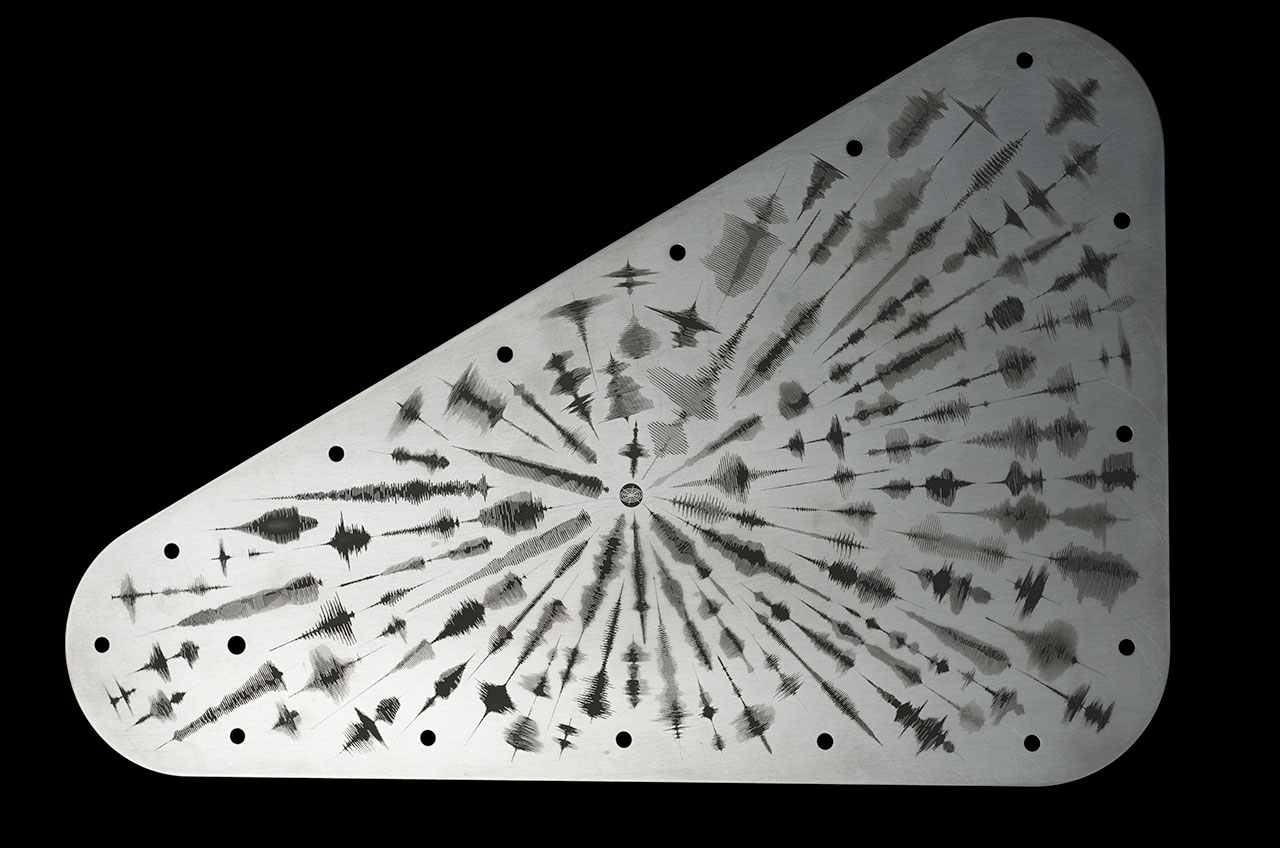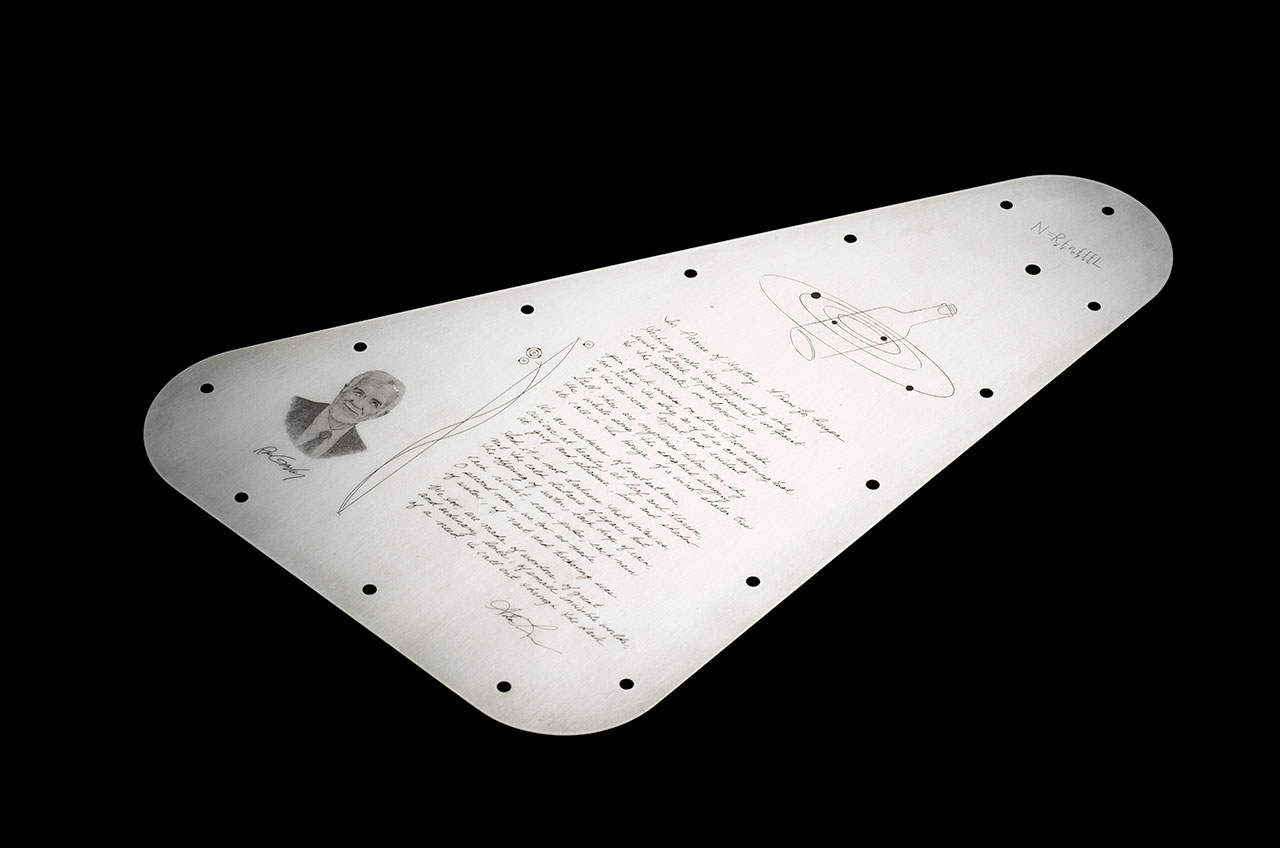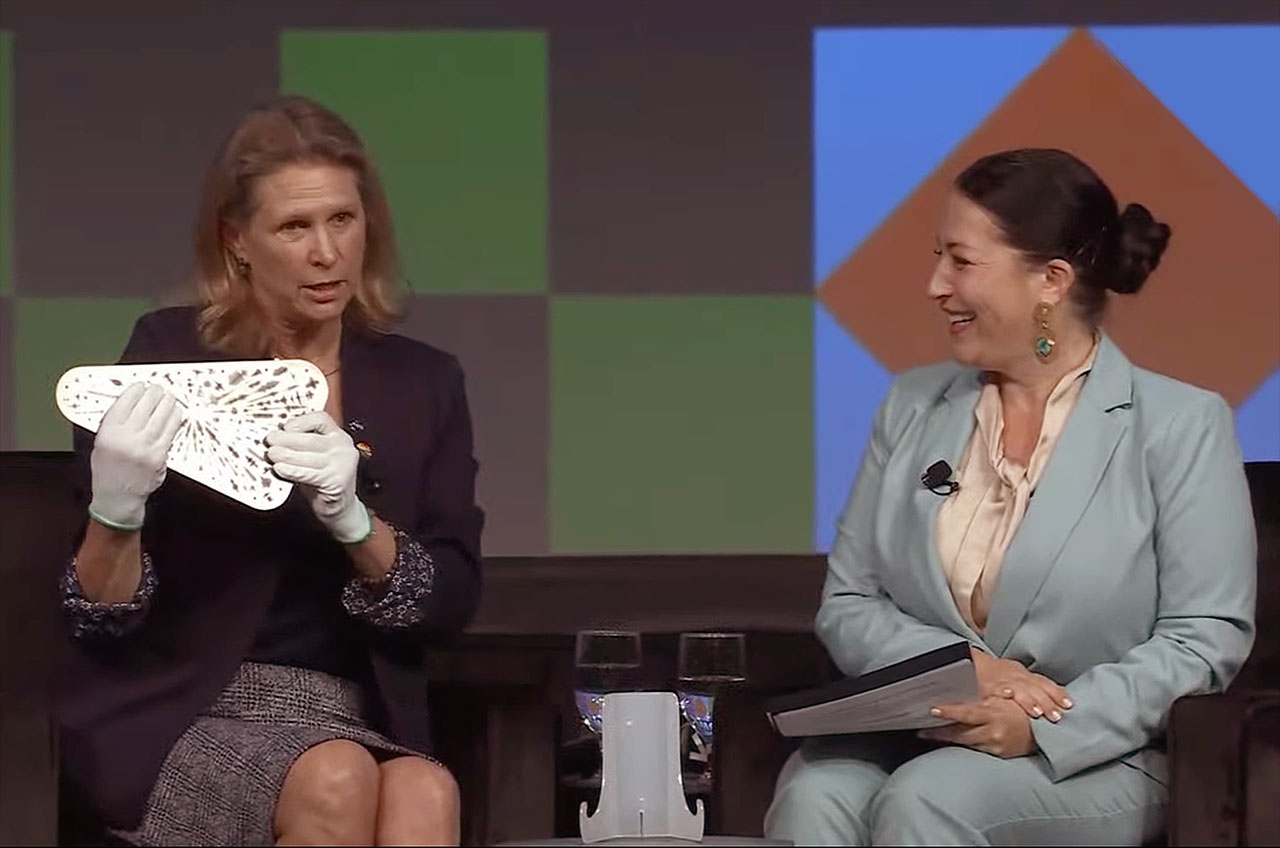Water-themed plaque to fly on Europa Clipper to Jupiter's icy ocean moon
"We have a long history of trying to communicate beyond all of us here on Earth."

A NASA spacecraft dedicated to studying a small ocean world will carry with it a metal plaque etched with the ripples created by the many ways humans say "water."
The Europa Clipper Vault Plate was revealed by NASA on Friday (March 8) at the opening session of the South by Southwest (SXSW) conference in Austin, Texas. Lori Glaze, NASA's director of planetary science, joined U.S. Poet Laureate Ada Limón on stage to discuss the intersection of space and art, as well as again hear Limón recite her ode, "In Praise of Mystery: A Poem for Europa," which is etched in her handwriting on one side of the plate bound for Jupiter's second moon.
Glaze held up a backup version of the 7-by-11-inch (18 by 28 centimeters) tantalum plaque, showing it for the first time to the SXSW audience and to those watching online.
"I put on gloves so that I can pick this up and show you," said Glaze. "This is the trial version. Everything is on here. They wouldn't let me actually touch the one that's going [to space], but even with the practice version, I have to wear gloves."
Related: Europa Clipper: A guide to NASA's new astrobiology mission
The plate installed on the Europa Clipper will seal an opening in the spacecraft's massive metal vault holding the electronics for its science instruments, protecting them from Jupiter's punishing radiation. The Clipper will make 49 close flybys of Europa in an effort to determine if there are conditions that could support life under the moon's icy crust.
Featuring graphic elements on both sides, the Europa Clipper Vault Plate will also continue a practice started by NASA more than 40 years ago. Beginning with the Pioneer 10 probe, which was the first to fly by Jupiter, many of the space agency's robotic explorers sent into the solar system and beyond have carried messages about humanity for those who might come across the distant probes in the future.
"We have a long history of trying to communicate beyond all of us here on Earth," said Glaze. "The 'Message in a Bottle' campaign that we have with Europa Clipper, sending a message from one water world to another, is a really good example of that."
The outward-facing panel of the vault plate features art that highlights Earth's connection to Europa. Linguists collected recordings of the word "water" spoken in 103 languages, from families of languages around the world. The audio files were then converted into waveforms, or visual representations of sound waves, and etched into the plate.
The waveforms, which resemble ripples, radiate out from a symbol representing the American Sign Language sign for "water."
The inward-facing side of the plate is engraved with a portrait of Ron Greeley, one of the founders of planetary science, whose early efforts to develop a mission to Europa two decades ago laid the foundation for the Europa Clipper. Also etched is artwork referencing the radio frequencies considered plausible for interstellar communication and the "Drake equation," which estimates the possibility of finding advanced civilizations beyond Earth as developed by astronomer Frank Drake.
Rounding out the plaques' features are a small microchip stenciled with more than 2.6 million names submitted by the public as part of NASA's Message in a Bottle campaign and, below that, Limón's handwritten poem.
"If I thought the poem itself took 19 drafts," said Limón, "I feel like it took me three hours to finally get the version of the handwriting that is now etched into the vault plate."
Europa Clipper, which is still being assembled at NASA's Jet Propulsion Laboratory in Pasadena, California, is targeted to leave Earth during a launch period that opens on Oct. 10. It will fly by Mars and then Earth to accelerate its journey to Jupiter, where it will arrive in 2030, beginning its science mission.
"I know nothing about space," said Limón, "but I know curiosity. And what links exploration and poetry so beautifully is our curiosity. We begin with the questions and we end with more questions. We begin with wonders and end with more wonders."
"Now, as the project continues, that Europa Clipper team have t-shirts and sweatshirts that all have the line [from the poem], 'We too, are made of water,'" she said. "It has become a unifying line as the team prepares for the launch."
Follow collectSPACE.com on Facebook and on Twitter at @collectSPACE. Copyright 2024 collectSPACE.com. All rights reserved.
Breaking space news, the latest updates on rocket launches, skywatching events and more!

Robert Pearlman is a space historian, journalist and the founder and editor of collectSPACE.com, a daily news publication and community devoted to space history with a particular focus on how and where space exploration intersects with pop culture. Pearlman is also a contributing writer for Space.com and co-author of "Space Stations: The Art, Science, and Reality of Working in Space” published by Smithsonian Books in 2018.
In 2009, he was inducted into the U.S. Space Camp Hall of Fame in Huntsville, Alabama. In 2021, he was honored by the American Astronautical Society with the Ordway Award for Sustained Excellence in Spaceflight History. In 2023, the National Space Club Florida Committee recognized Pearlman with the Kolcum News and Communications Award for excellence in telling the space story along the Space Coast and throughout the world.



